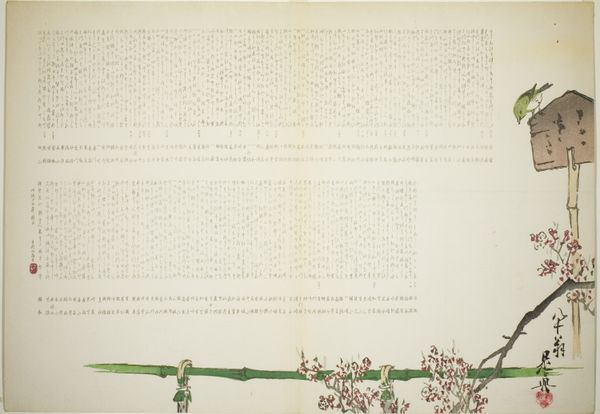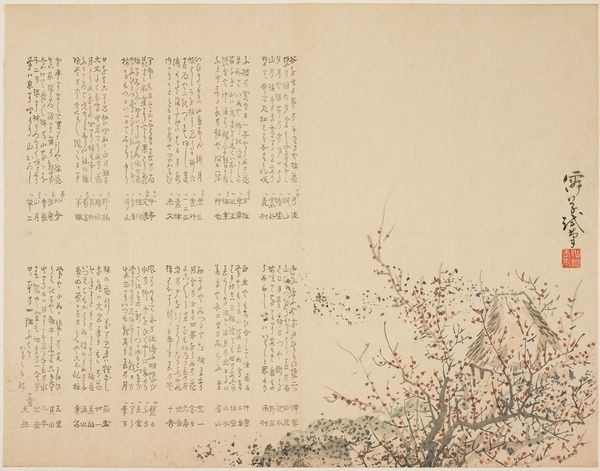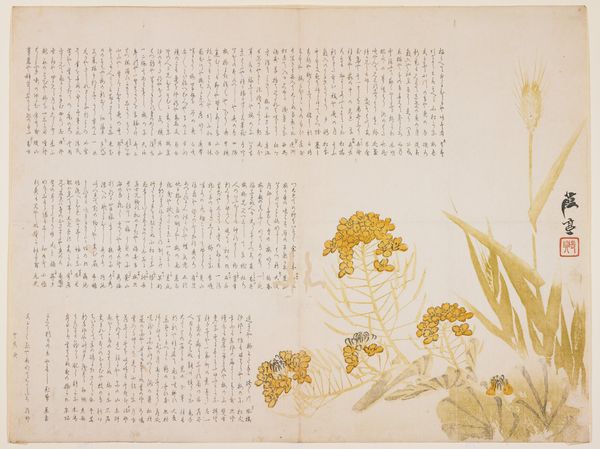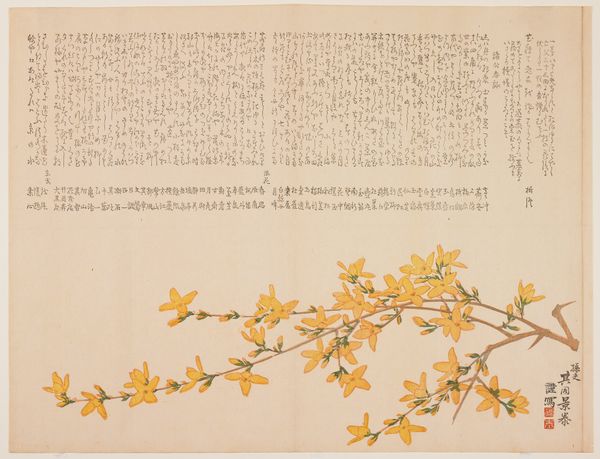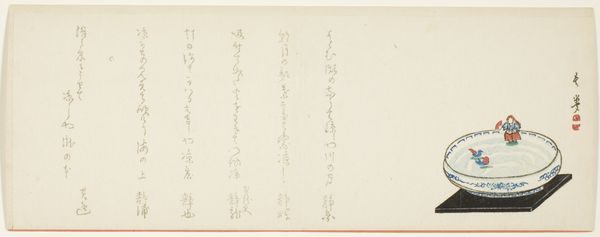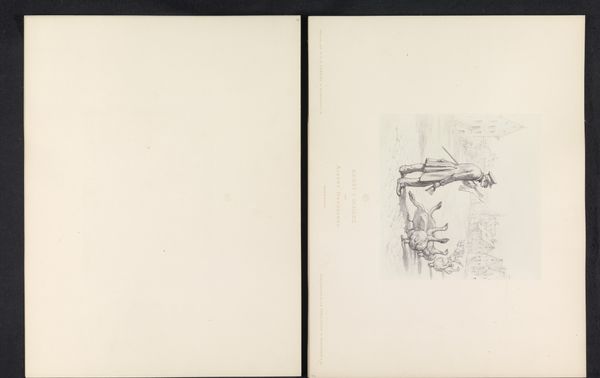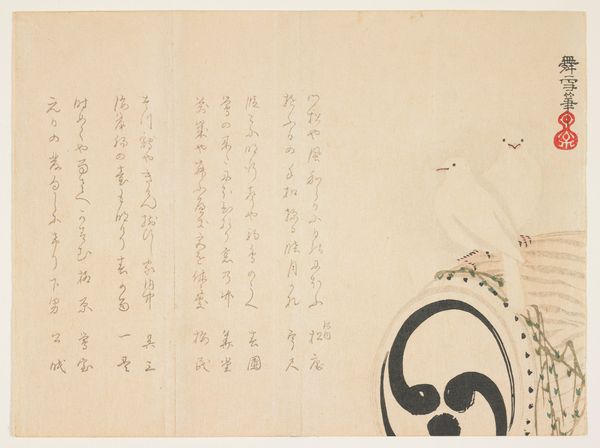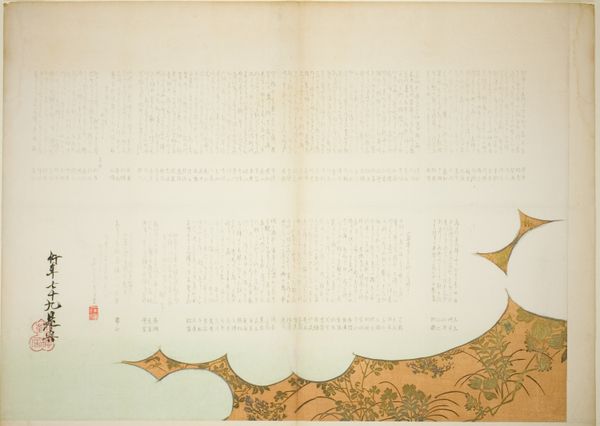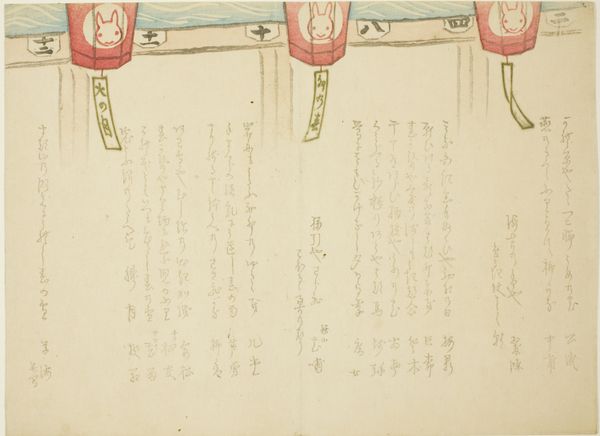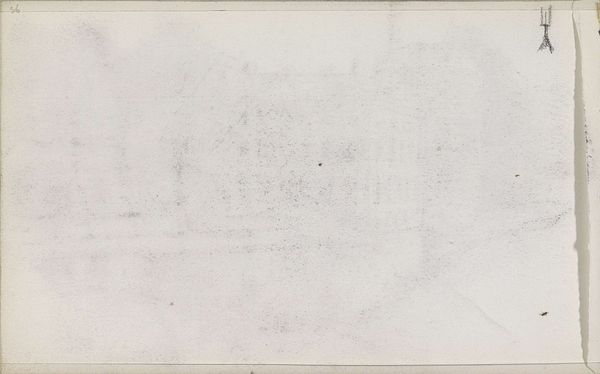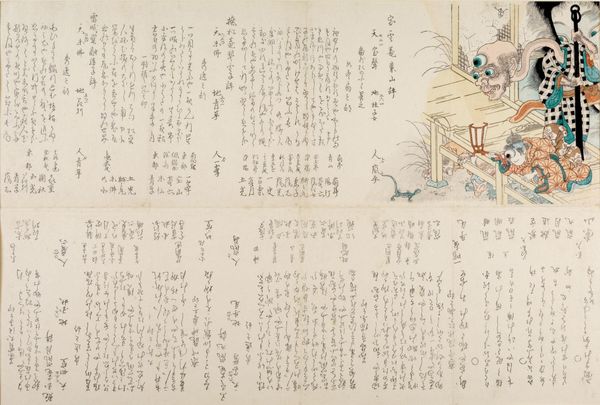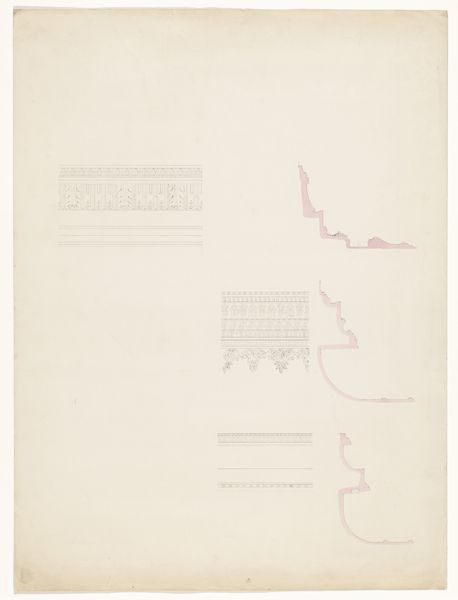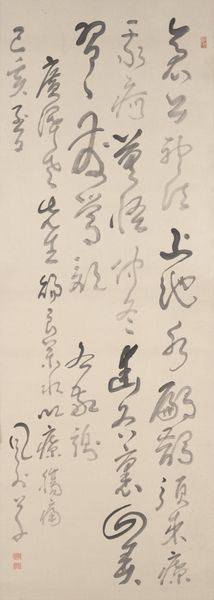
print, ink, color-on-paper
#
water colours
# print
#
japan
#
personal sketchbook
#
ink
#
color-on-paper
#
ink drawing experimentation
#
sketchbook drawing
#
watercolour bleed
#
watercolour illustration
#
mixed medium
#
sketchbook art
#
botanical art
#
watercolor
Dimensions: 15 5/8 x 21 3/4 in. (39.7 x 55.3 cm) (image, sheet)22 1/16 x 27 15/16 in. (56 x 71 cm) (mat)
Copyright: Public Domain
Editor: Here we have Shibata Zeshin's "Spring Field with Mt. Fuji View," made around 1858 using ink and color on paper. The pale washes of color and faint outline of the mountain give it a feeling of ethereal distance, a delicate but firm assertion of the natural world, despite the dominant blocks of script. What strikes you most about this piece? Curator: The visual tension between the seemingly detached mountain and the assertive script demands interrogation. Are they truly separate, or does one inform the other? I find myself considering the place of landscape within the Edo period's complex social hierarchies and its function in nationalist and imperialist ideologies, and questioning the function of this ‘personal sketchbook’ entry in reinforcing or resisting those systems. Do you get a sense that the writing constrains, grounds, or perhaps even elevates the imagery of Mount Fuji and the surrounding botanicals? Editor: That’s fascinating. I hadn't considered the social context so directly. To me, the writing felt like a field-note type observation; part of an artist’s process of noticing what they are surrounded by. So perhaps an attempt to possess and control their environment through words, or even democratize it by combining a famous, monumental subject (Fuji) with ordinary observations? Curator: Exactly! The relationship becomes charged when viewed through lens of power, whether class, artistic schools, or state influence. How does Zeshin situate *himself*? The choice to juxtapose landscape and text begs examination. Consider the act of drawing itself as an assertion, one that implies an interaction with, and perhaps an attempt to influence, both natural and social environments. Editor: I see that connection more clearly now, especially when thinking about landscape as not just scenery, but a site of cultural and political meaning. Thanks. I'm now considering what questions this might provoke around land rights, natural resources, and indigenous rights. Curator: Wonderful. We have perhaps arrived at the key concept: art historical analysis prompts us to understand artworks as reflections of and participants in ongoing dialogues about our places within society.
Comments
No comments
Be the first to comment and join the conversation on the ultimate creative platform.
